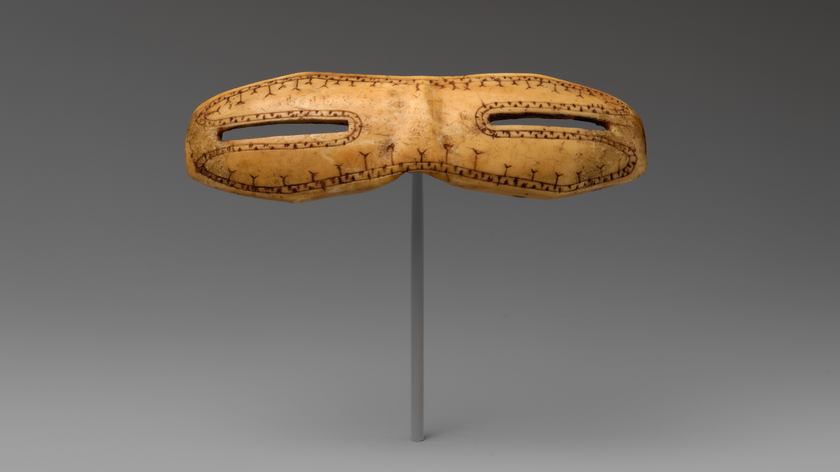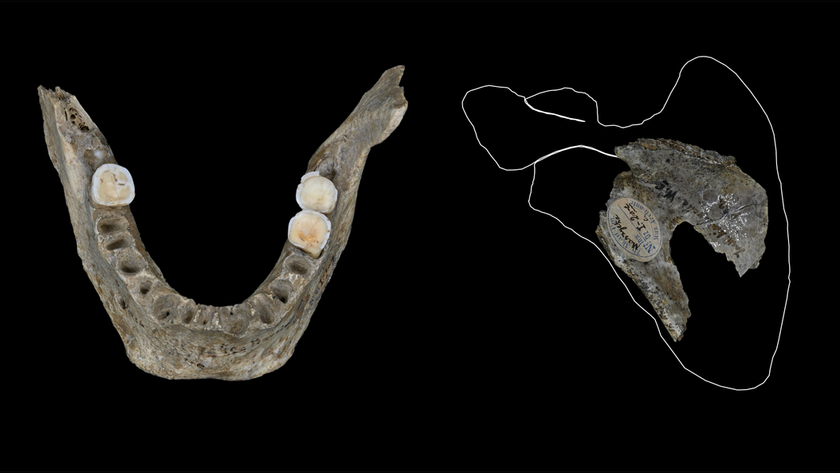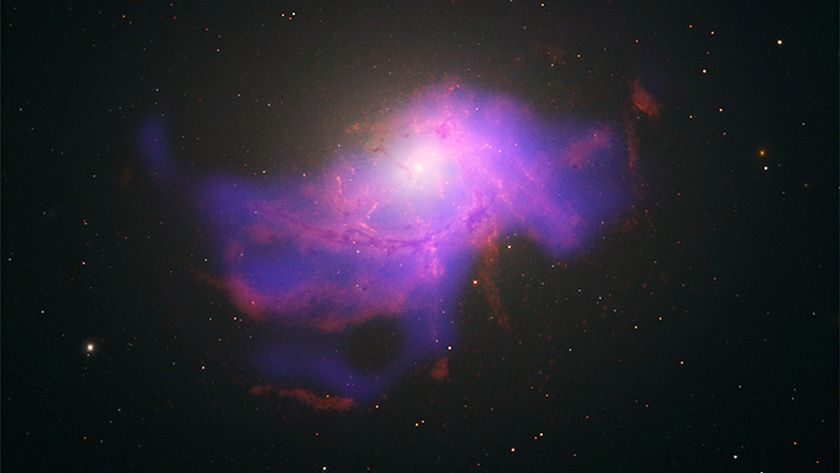Ancient Chinese Tomb Reveals Vivid Murals & Poetry (Photos)
In Datong City in northern China, not far from a modern railway station, archaeologists have uncovered a 1,000-year-old tomb covered with murals. The tomb's ceiling is decorated with stars and constellations. Exactly who occupied the tomb is a mystery -- no human remains were found, although archaeologists say this is not unusual for Buddist burials that date to this time period. [Read full story: 1,000-Year-Old Tomb Reveals Murals, Stars & Poetry]
The entrance
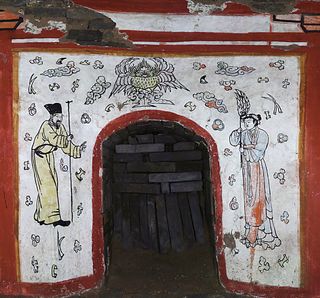
This image shows the entrance to the tomb. The entryway is flanked by two gatekeepers. On the left is a man holding a staff, while on the right there is a woman holding a fan. Above the door is a Garuda, a mythical bird, which is depicted as watching over the entrance. Photo courtesy Chinese Cultural Relics
Pets and attendants
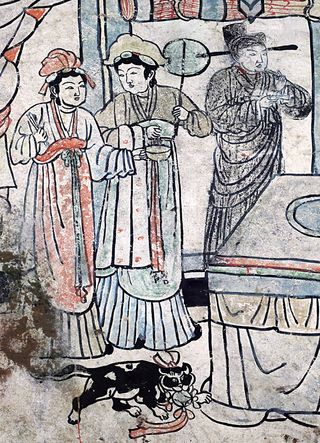
The mural in this picture is located on the tomb's north wall and shows a black and white cat with a red ribbon on its neck and a silk strip ball in its mouth. People who worked as attendants to the tomb's occupant can be seen in the background. The cat would presumably have been one of the tomb owner's pets.
The occupant's dog?

The same mural on the north wall also shows a black and white dog with a red ribbon on its neck, and a curved tail. More attendants can be seen and there is an empty bed between the cat and dog. Photo courtesy Chinese Cultural Relics
Sign up for the Live Science daily newsletter now
Get the world’s most fascinating discoveries delivered straight to your inbox.
The scene
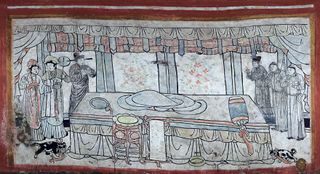
Here is the whole scene on the north wall. The cat, dog and attendants are shown in a bedroom with an empty bed. Photo courtesy Chinese Cultural Relics

The ceiling of the tomb, now damaged, contains stars painted in vermilion, a bright red color. The stars are connected together to form constellations. Photo courtesy Chinese Cultural Relics
A small statue

Inside the tomb archaeologists found a small statue of the tomb owner measuring about 3.1 feet (0.94 meters) in height. The smiling owner is shown wearing a long black robe, and sitting cross legged on a platform. No human remains were found in the tomb. Although it had been robbed at some point in the past, the researchers say it's also possible that the statue acted as a substitute for a burial. Photo courtesy Chinese Cultural Relics
Poetry

The east wall of the tomb shows attendants carrying food and drinks. There is also a horse saddle on a rack, a reclining deer, a crane, bamboo trees, a crawling yellow turtle, an axe and a snake. At top right, beside the saddle, there is a poem. Part of it reads, "Time tells that bamboo can endure cold weather. Live as long as the spirits of the crane and turtle." Photo courtesy Chinese Cultural Relics
Travels

The west wall of the tomb shows scenes of travel. At the top, a Bactrian camel pulls a carriage, while at bottom, a saddled horse is being led by an attendant. At top left there are agricultural scenes showing ploughing and men working with hoes. Photo courtesy Chinese Cultural Relics
Follow Live Science @livescience, Facebook & Google+.

Owen Jarus is a regular contributor to Live Science who writes about archaeology and humans' past. He has also written for The Independent (UK), The Canadian Press (CP) and The Associated Press (AP), among others. Owen has a bachelor of arts degree from the University of Toronto and a journalism degree from Ryerson University.
